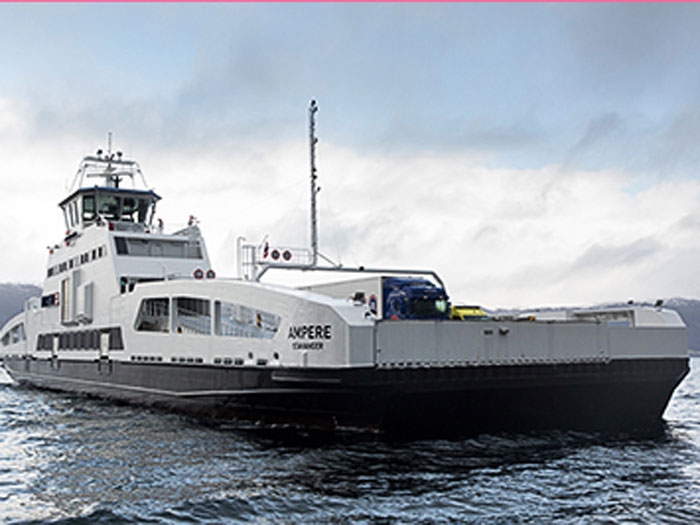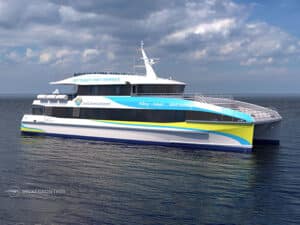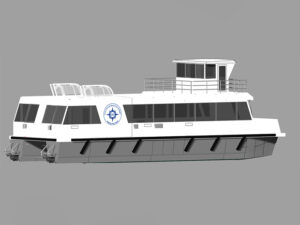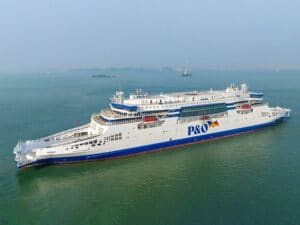
Battery powered ferry enters service in Norway
Written by Nick Blenkey
MAY 19, 2015 – Ampere, the world’s first battery powered electric car and passenger ferry, has entered service in Norway. Built by the Fjellstrand shipyard, the ferry only uses 150 kWh per route, which corresponds to three days use of electricity in a standard Norwegian household.
Nominated for a Nor-Shipping 2015 Energy Efficiency Award, the fjord-crossing ro-pax has no direct emissions due to its battery power source, and its catamaran hull form can accommodate 120 cars. The innovative vessel was originally developed as a submission to a Norwegian Ministry of Transport competition in which the winner would get a 10-year license to operate the Lavik-Oppedal route beginning in 2015. The Ampere went on to win this competition and is currently operating on the route.
To reduce the energy consumption, the vessel has a lightweight aluminum construction. The low weight makes it possible to optimize hull shape and create a propeller system of high efficiency.
In conjunction with the shipbuilder, Siemens installed the complete electric propulsion system and set up charging stations with lithium-ion batteries which are charged from hydro power. With the change to battery, shipowner Norled is reducing the cost of fuel by up to 60 percent.
As the power grid in the region is relatively weak, Siemens and Norled decided to install three Corvus Energy battery packs: one lithium-ion battery on board the ferry, and one at each pier to serve as a buffer. The 260 kWh units supply electricity to the ferry while it waits. Afterward, the battery slowly recoups all of this energy from the grid until the vessel returns to drop off passengers and recharge.
Charging stations are housed in small buildings about the size of newsstands. The ferry’s onboard batteries are recharged directly from the grid at night when the ferry is not in use. Each battery pack has the output of 1,600 standard car batteries.
The Ampere will consume around two million kWh per year, whereas a traditional diesel ferry consumes at least one million liters of diesel a year and emits 570 tons of carbon dioxide and 15 metric tons of nitrogen oxides.
“We are proud to operate the world’s first electric ferry”, says Sigvald Breivik, Technical director of Norled. “Siemens has been a great partner in finding innovative and sustainable solutions for our environment.”
On board the ferry, Siemens installed its electric propulsion system BlueDrive PlusC. It includes a battery and steering system, thruster control for the propellers, an energy management system and an integrated alarm system. The integrated automation systems control and monitor the machineries and auxiliaries on the ferry and are connected via Profibus to all other subsystems.
Unlike many electric cars, the emission-free ferry was developed from the ground up. The ferry, which is 80 meters long and 20 meters wide, is driven by two electric motors, each with an output of 450 kilowatts. As it is of aluminum rather than steel construction, the ferry is only half as heavy as a conventional ferry, despite its ten ton batteries.
The Ampere is a milestone on the road to operating completely emission-free ferries along Norway’s long coastline, with at least 50 other routes currently able to sustain battery-operated vessels.





Leave a Reply
You must be logged in to post a comment.